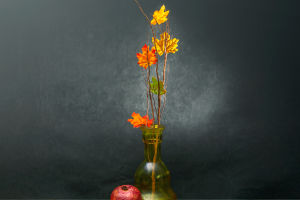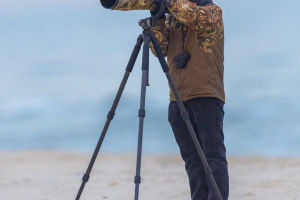Hello, photographer Lykkers! Still life photography is a captivating art form that focuses on capturing inanimate objects with an emphasis on their aesthetic qualities.
This technique involves arranging everyday objects in a way that highlights their textures, shapes, and colors, often under precise lighting conditions. Whether used in commercial settings or fine art, still life photography allows for endless creative possibilities.
Introduction to Still Life Photography
Still life photography, often referred to as object photography, involves the artistic portrayal of inanimate subjects. Common objects such as fruits, flowers, and household items are arranged in a thoughtful composition that aims to capture their beauty and significance. The goal is to create visually striking images that showcase form, texture, and light in a harmonious way.
The Historical Roots of Still Life Photography
The origins of still life photography can be traced back to the tradition of still life painting, particularly the "nature morte" genre, which flourished in the 17th century. This painting style focused on depicting objects such as food, flowers, and everyday tools with great detail and realism.
Photographers like Oscar Rejlander began applying this artistic tradition to photography in the mid-1800s, creating "tableaux vivants" or staged scenes.
One of the pioneers of still life photography was Adolphe Braun, who is renowned for his floral photography. Throughout the late 19th and early 20th centuries, photographers like Edward Steichen and Imogen Cunningham advanced the genre by experimenting with light and composition. Other notable figures include Paul Outerbridge and Albert Renger-Patzsch, both of whom contributed to shaping the modern style of still life photography.
How to Create a Stunning Still Life Photograph
Creating an effective still life image requires careful planning and technical precision. Here are some key elements to consider:
Choosing the Right Subject
Selecting objects with interesting shapes, colors, and textures is essential. These elements will form the basis of the composition and play a crucial role in making the final image visually engaging.
Composition Techniques
Proper arrangement of objects is vital. Using principles such as the rule of thirds, balanced proportions, and visual harmony will help create a compelling scene. Consider both contrast and symmetry to guide the viewer's eye.
Lighting
Lighting plays a significant role in still life photography. Soft, diffused light is often preferred to reduce harsh shadows. Tools like reflectors and softboxes can help control the light and enhance the textures of the objects being photographed.
Background and Framing
Opt for neutral or unobtrusive backgrounds that will not distract from the main subject. A simple colored backdrop can be a great choice. Additionally, selecting the right angle and focal length will help emphasize the subject's details.
Post-Processing
After capturing the image, post-production can further enhance the composition. Adjusting contrast, saturation, and white balance can bring out the colors and textures, ensuring the image is visually striking.
Genres and Styles of Still Life Photography
Still life photography is a versatile genre with various styles and subgenres, each focusing on different aspects of composition and subject matter. Some popular types include:
Commercial Still Life
This style is often used in advertising to highlight products such as food, cosmetics, or household items. The focus is on making the products look appealing to potential consumers.
Abstract Still Life
Abstract still life emphasizes geometric shapes, forms, and colors. Objects are arranged in a way that removes them from their conventional context, creating striking visual compositions.
Conceptual Still Life
This style uses objects to express abstract ideas or themes. The arrangement of objects is intended to evoke a deeper meaning or narrative.
Minimalist Still Life
In minimalist still life, simplicity is key. Few objects are placed in a carefully balanced composition, often with an emphasis on clean lines and negative space.
Glamour Still Life
Glamour still life focuses on luxury and elegance. High-end accessories, jewelry, or fine art objects are often used to convey a sense of sophistication.
Pop Still Life
Pop still life takes inspiration from pop art, using bright colors and bold designs. Objects often have a playful or whimsical feel and are arranged to create eye-catching compositions.
Notable Examples in Still Life Photography
Throughout the history of photography, many renowned photographers have created iconic still life works. Some notable examples include:
- Edward Weston's Pepper No. 30 (1930): A simple pepper transformed into an artistic form through light and composition.
- Robert Mapplethorpe's Calla Lily (1988): A delicate flower captured in a close-up that emphasizes form and beauty.
- Martine Franck's Classic Still Life with Matches (1999): A striking composition of objects with rich colors and geometric shapes.
Conclusion: The Enduring Appeal of Still Life Photography
Still life photography is a powerful artistic tool that combines technical skill with creative expression. By carefully selecting and arranging objects, photographers can create captivating images that highlight the beauty in the everyday. Whether for commercial or fine art purposes, still life photography allows for endless exploration of light, form, and texture.
Aspiring photographers can find inspiration from the great masters of the genre while experimenting with their own compositions. Ultimately, the art of still life photography offers a rewarding way to enhance one's photographic skills and gain a deeper appreciation for the visual world.


